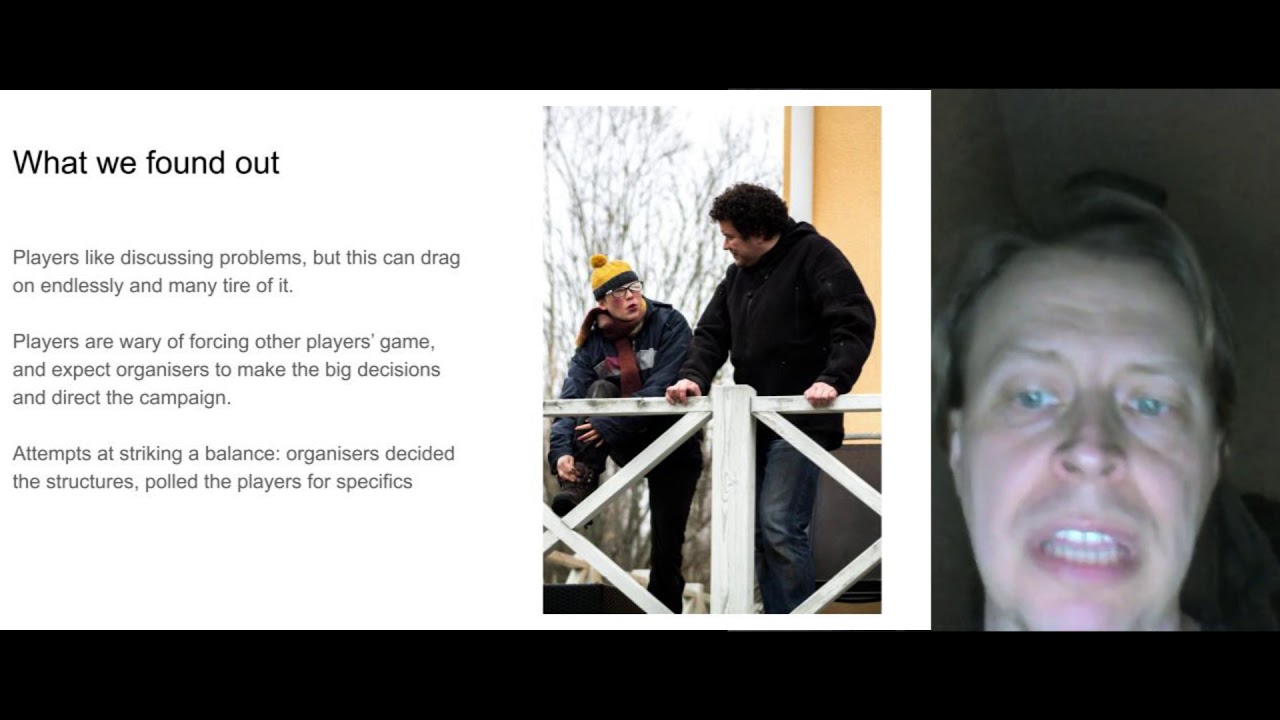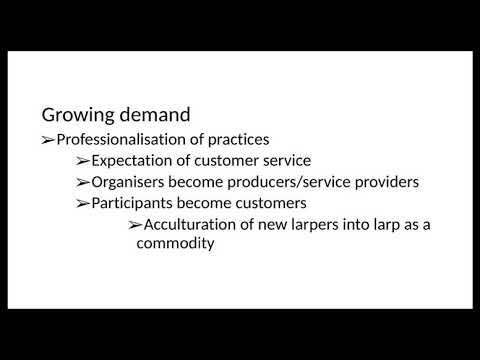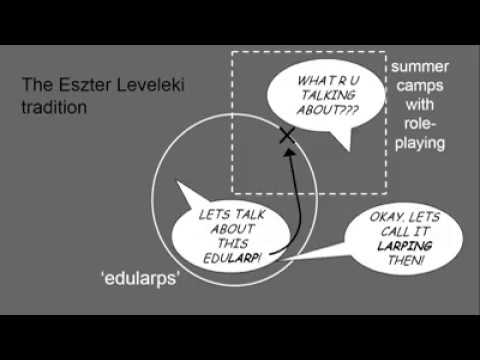Tag: Solmukohta 2020
-

Solmukohta 2020: Shearing Sheep and Holding Ballots – Community Building in a Post-Apocalyptic Campaign
A talk about Second Year (Toinen vuosi), a 4-part larp campaign about building a community of survivors immediately following an apocalyptic pandemic.
-

Solmukohta 2020: Living or Larping Consumer Culture? Exploring the Commodification of Larp
Usva discusses how larp is becoming commodified, what that means, and what the repercussions of this for specific events as well as the community at large.
-

Solmukohta 2020 Keynote: Sarah Lynne Bowman – Integrating Larp Experiences
Dr. Sarah Lynne Bowman talks about integration practices for concretizing & completing transformative processes after larps end & daily life resumes.
-

Solmukohta 2020 Keynote: Kjell Hedgard Hugaas – Designing for Transformative Impacts
Kjell Hedgard Hugaas is a game designer, activist, politician, event organizer, and trained actor. In this keynote, Kjell Hedgard Hugaas will make the case for why we should design larps that invite the potential for transformative impacts on players. He will discuss the importance of transparency and intentionality when designing for impacts in domains such
-

Solmukohta 2020 Futurespective: Sharon Underberg
It’s a retrospective – from the year 2040! Sharon Underberg tells us what’s happened in their world of larp “in the past 10 years”.
-

Solmukohta 2020: Kaisa Kangas – Seaside Prison – Designing Larp for Wider Cultural Audiences
Seaside Prison is a larp about life in Gaza. In this talk we discuss the its creation, its aims, & the futures for larp in the culture establishment.
-

Solmukohta 2020: Mátyás Hartyándi – Larp – Oddity, Hypernym or what?
A talk about the future and self-definition of larps for those who are interested in overlapping activities and/or multidisciplinary cooperations.